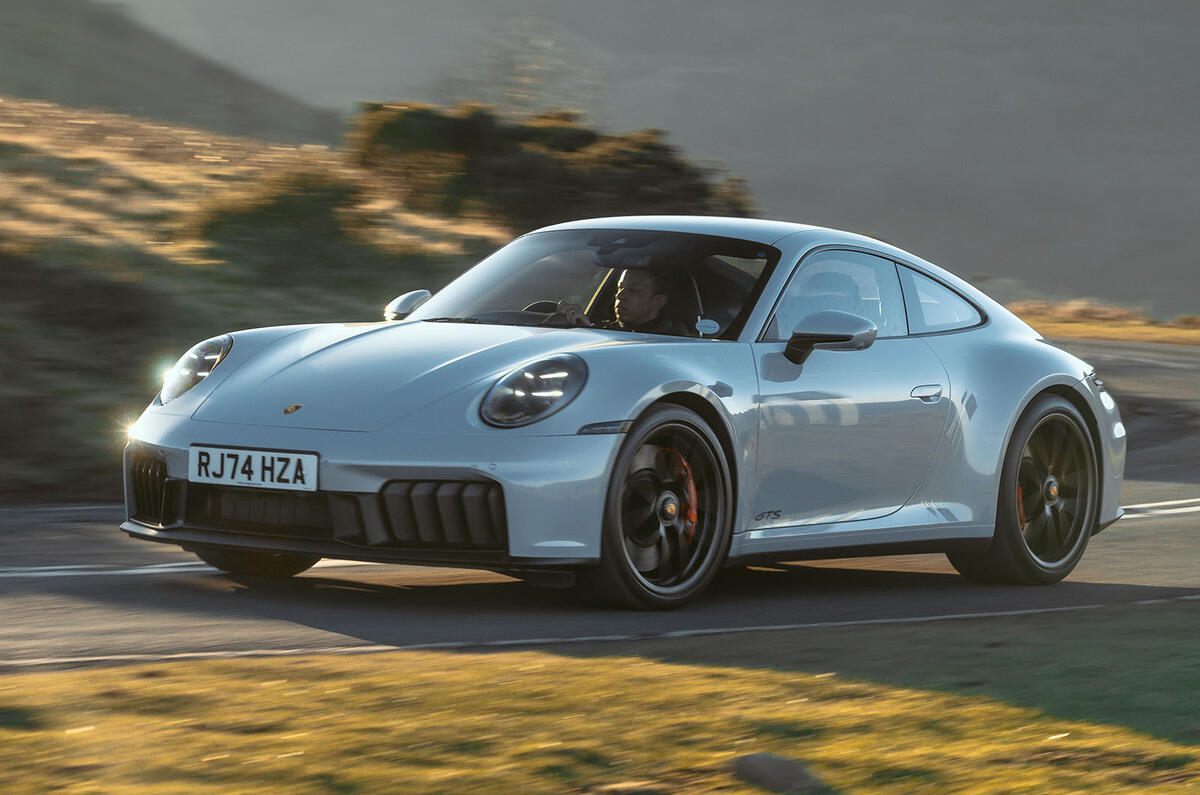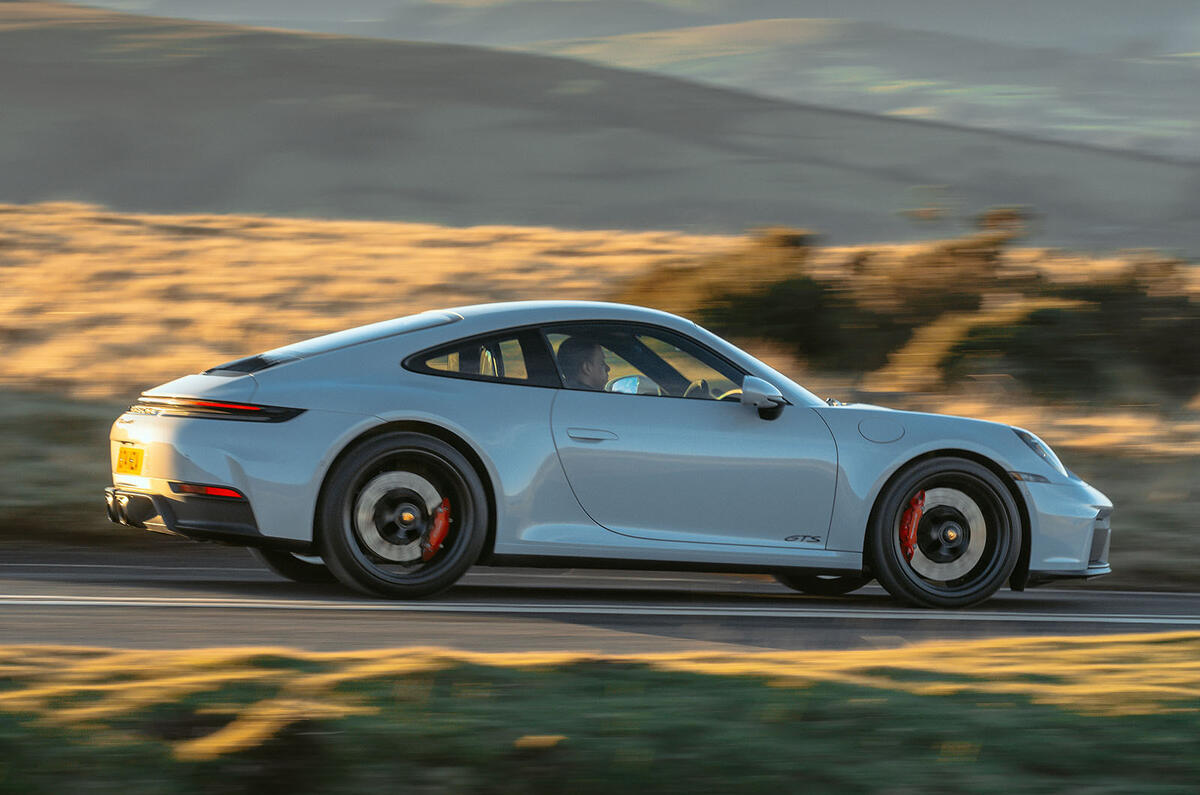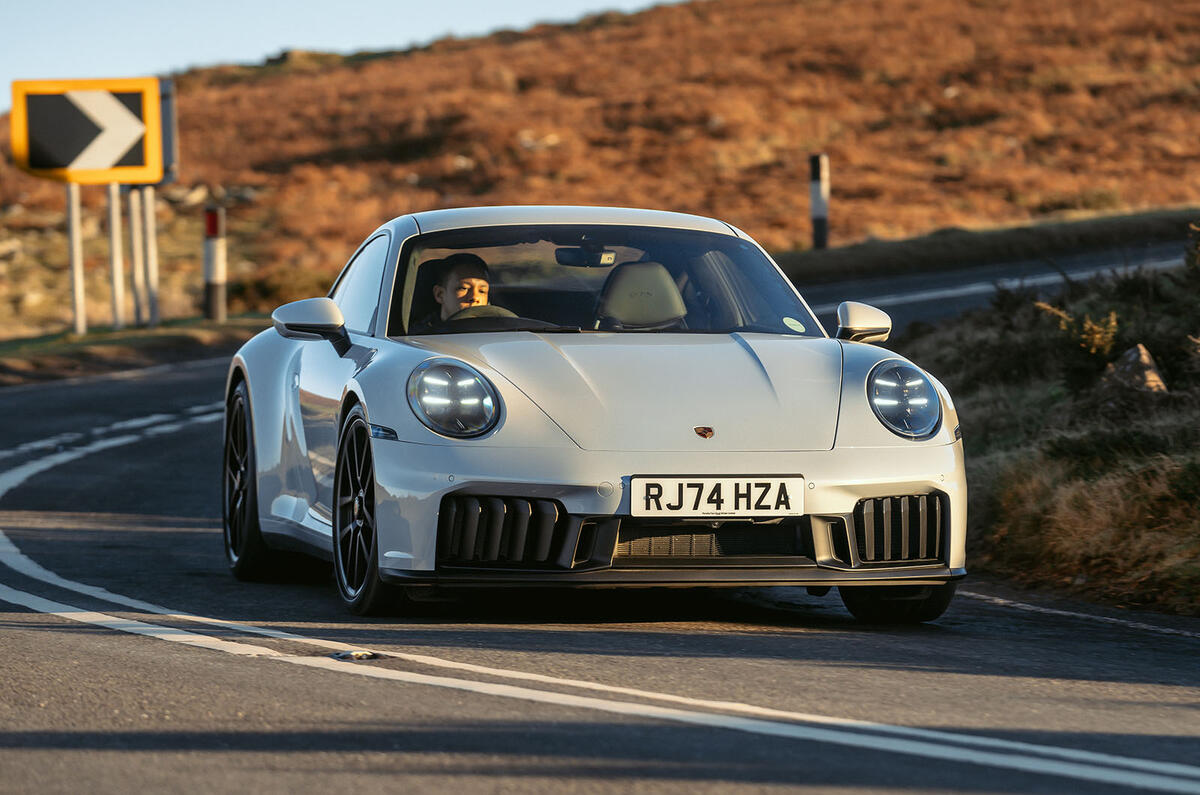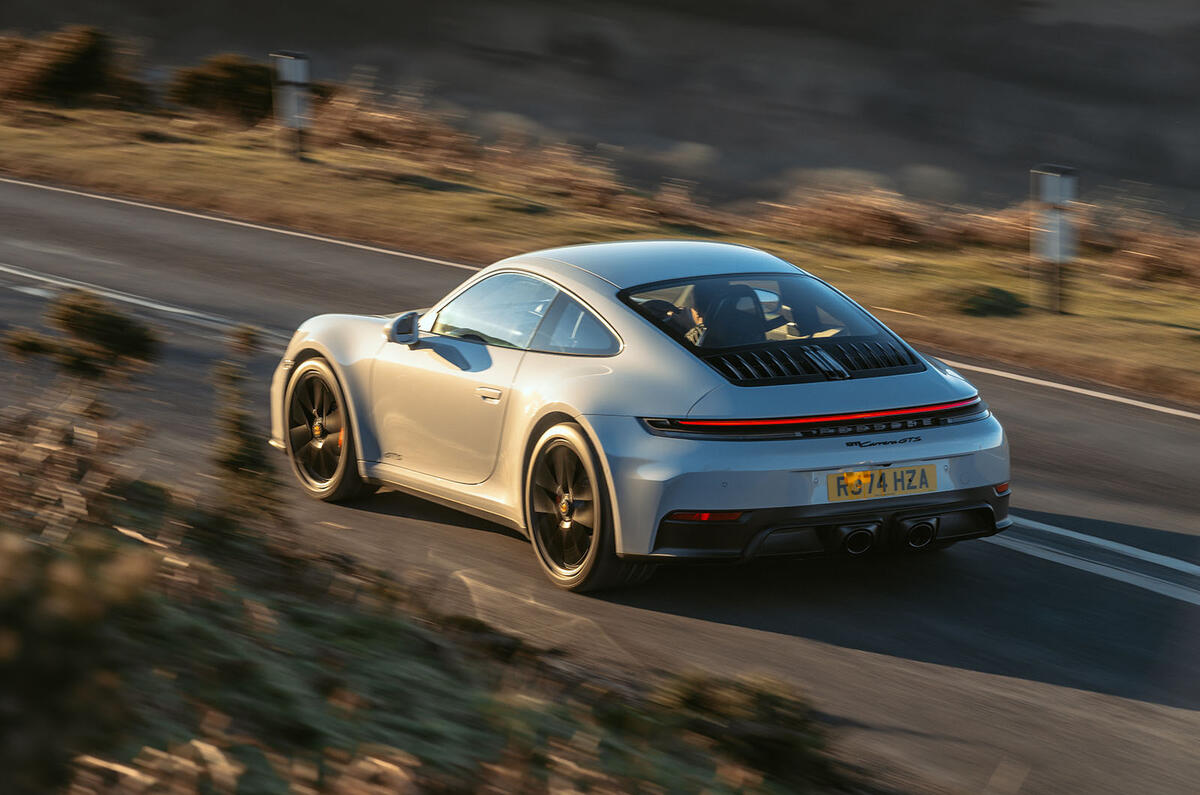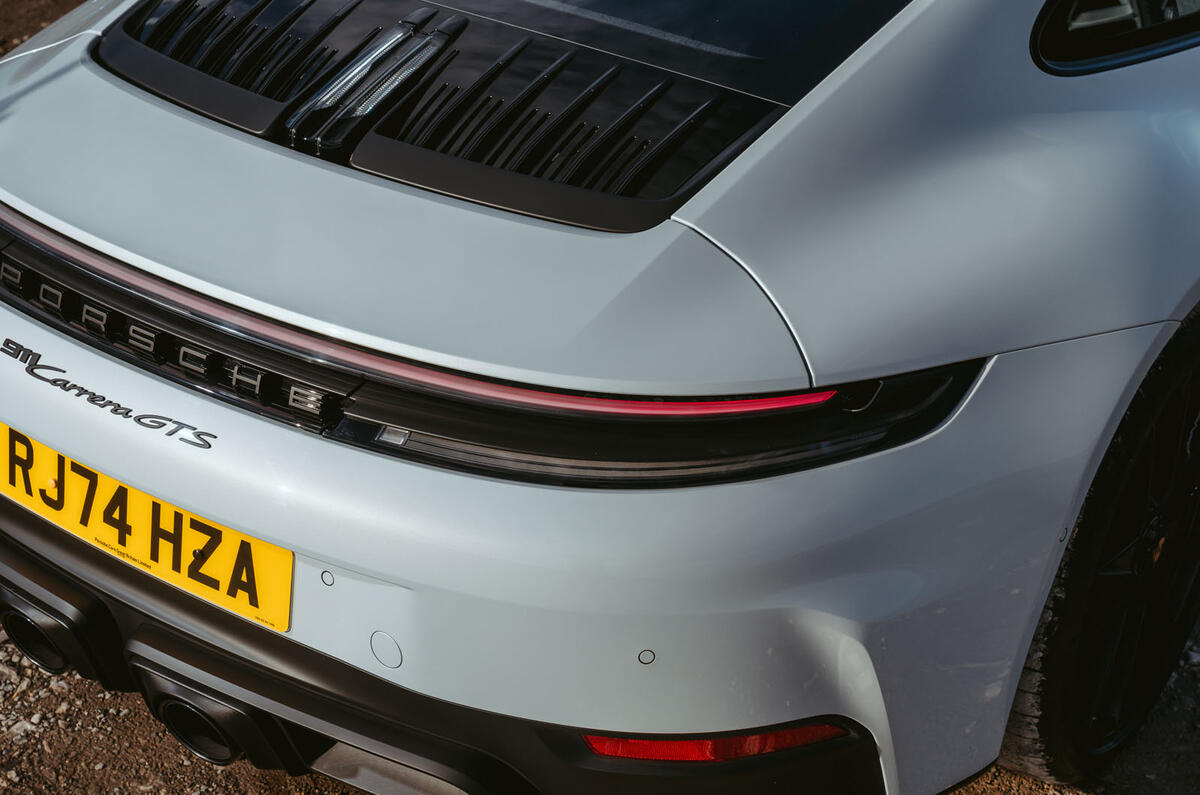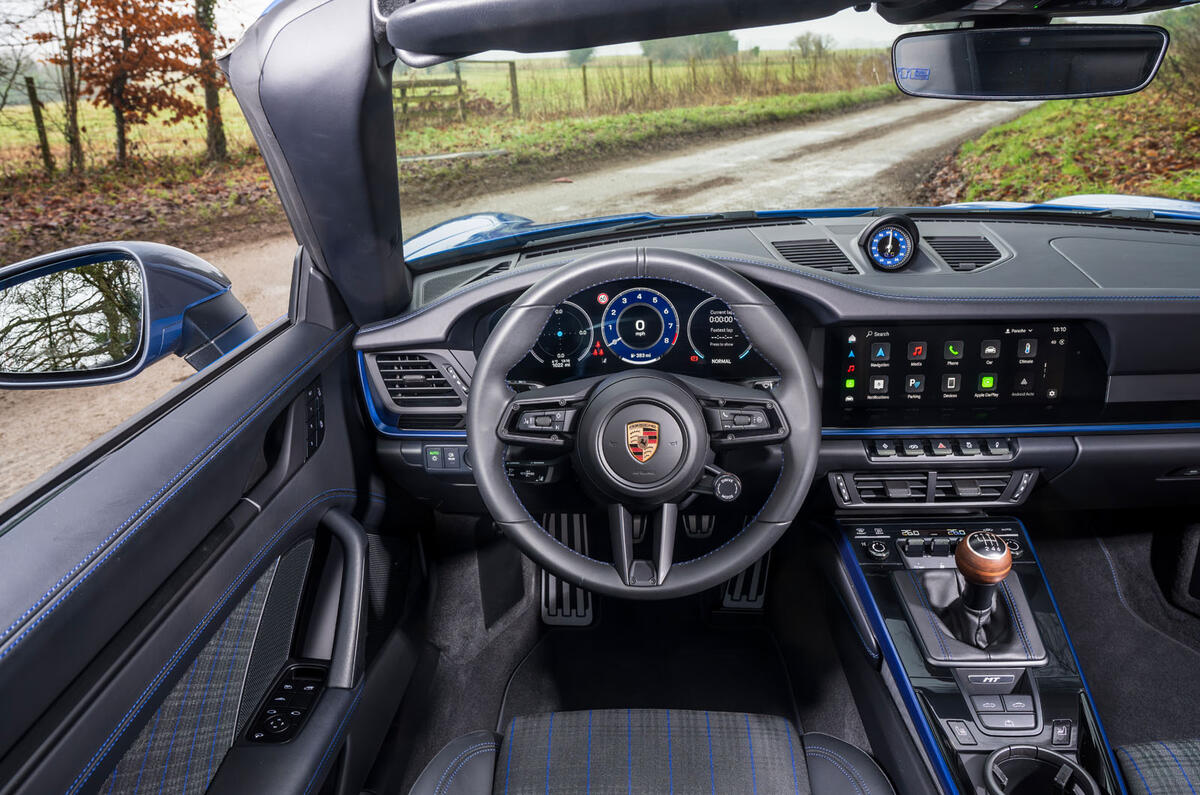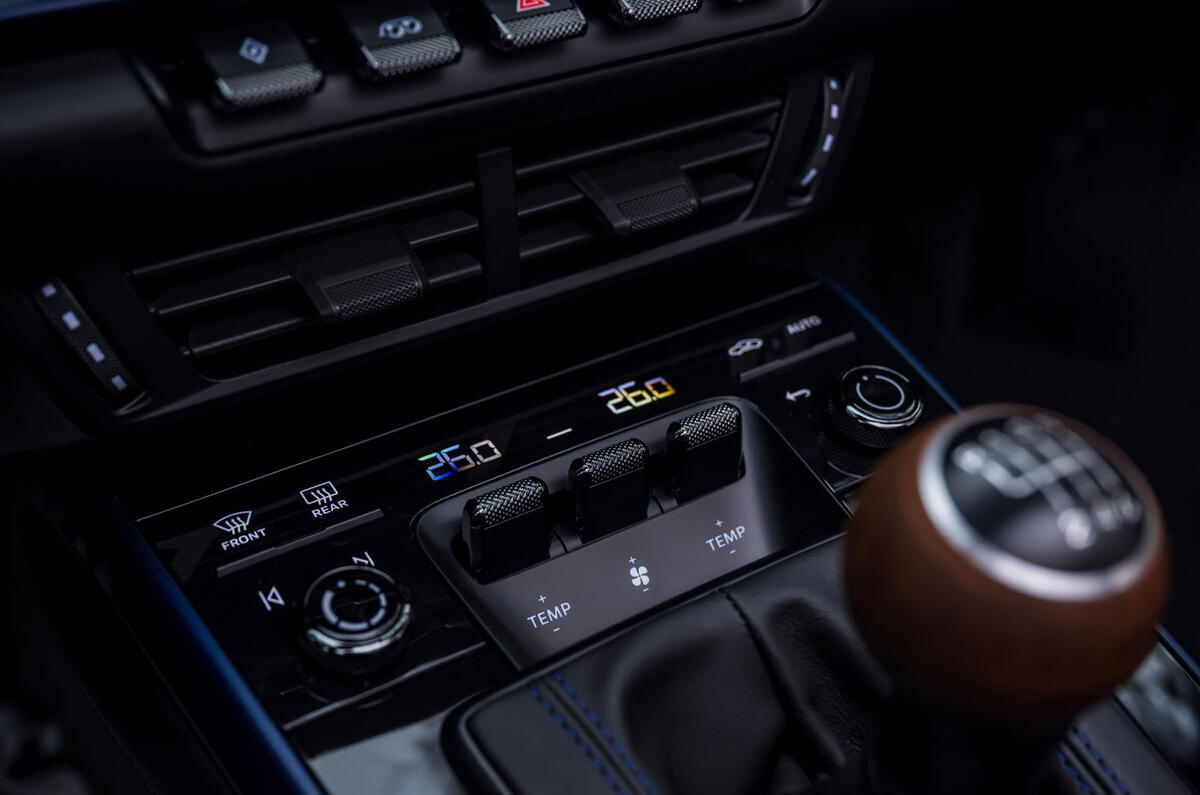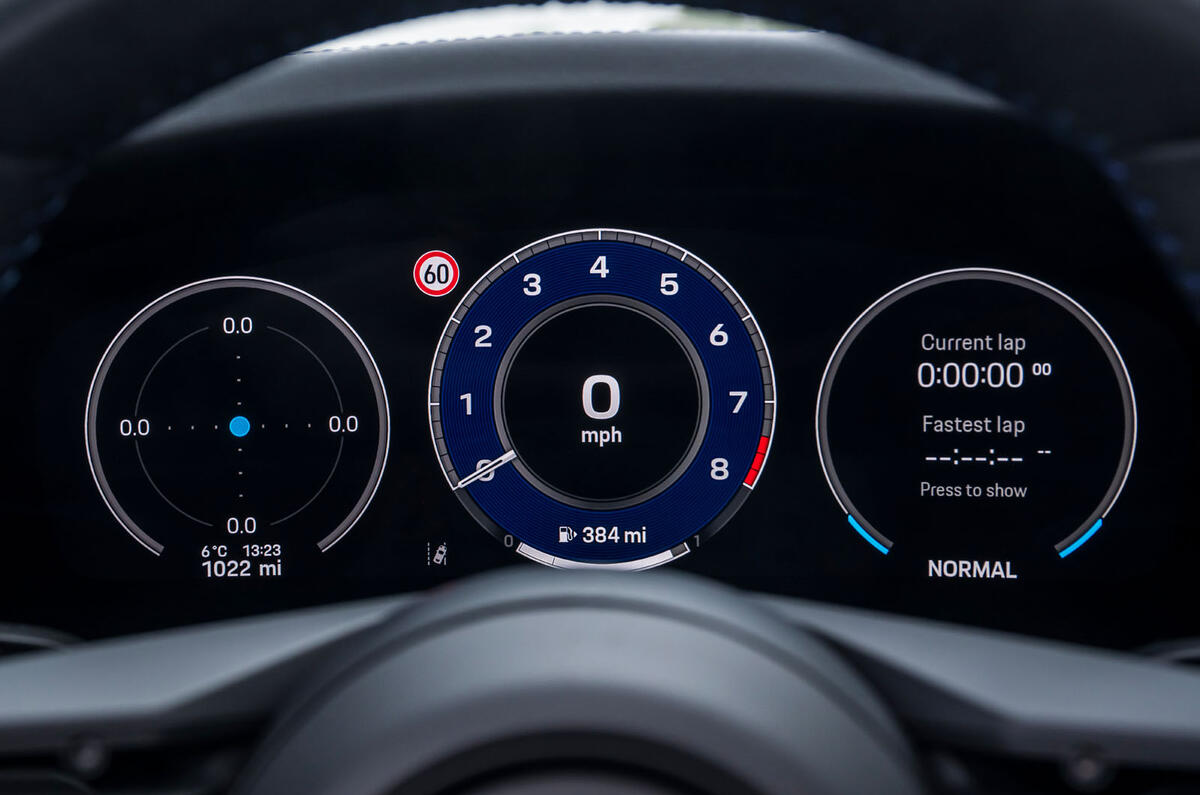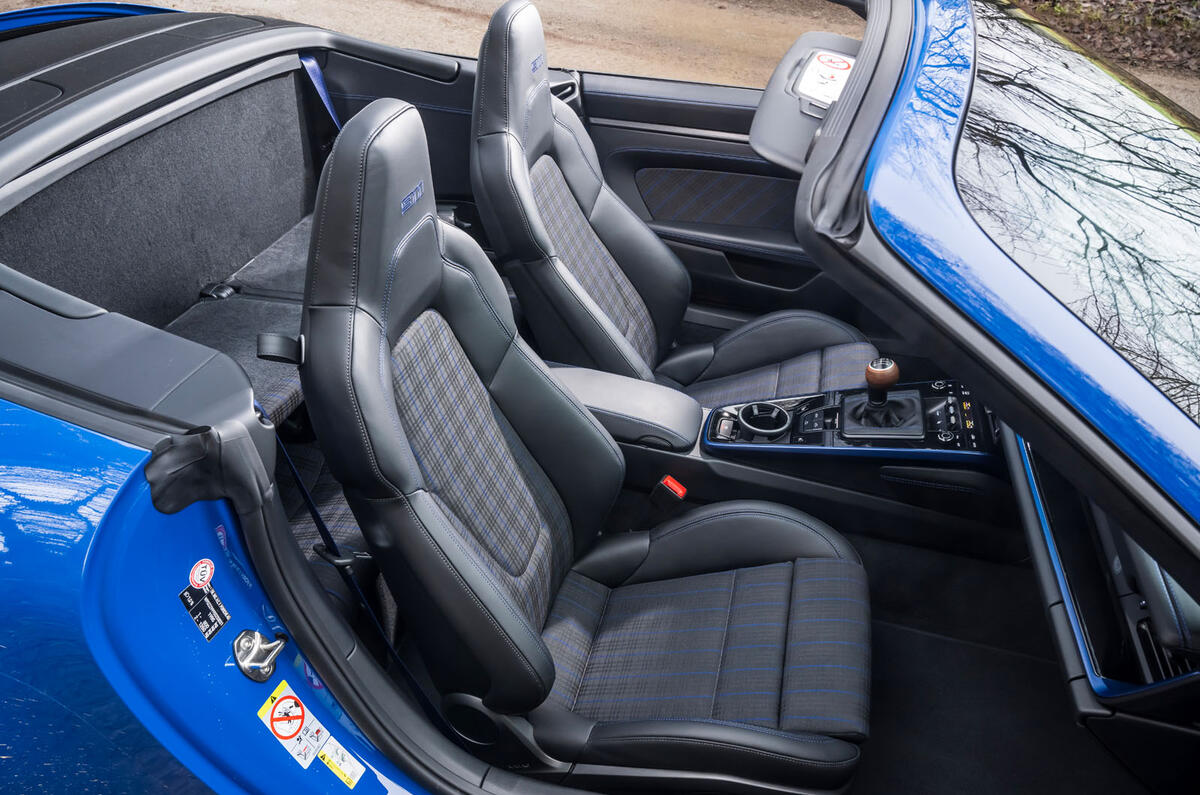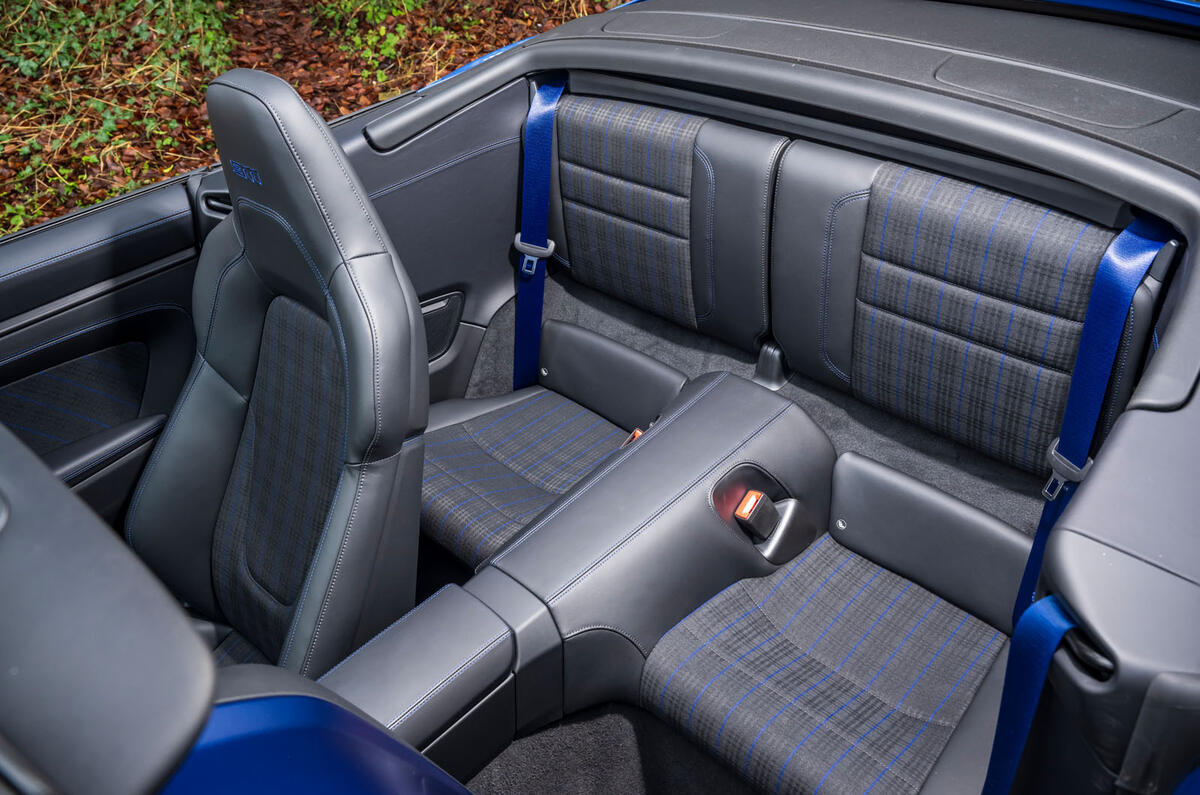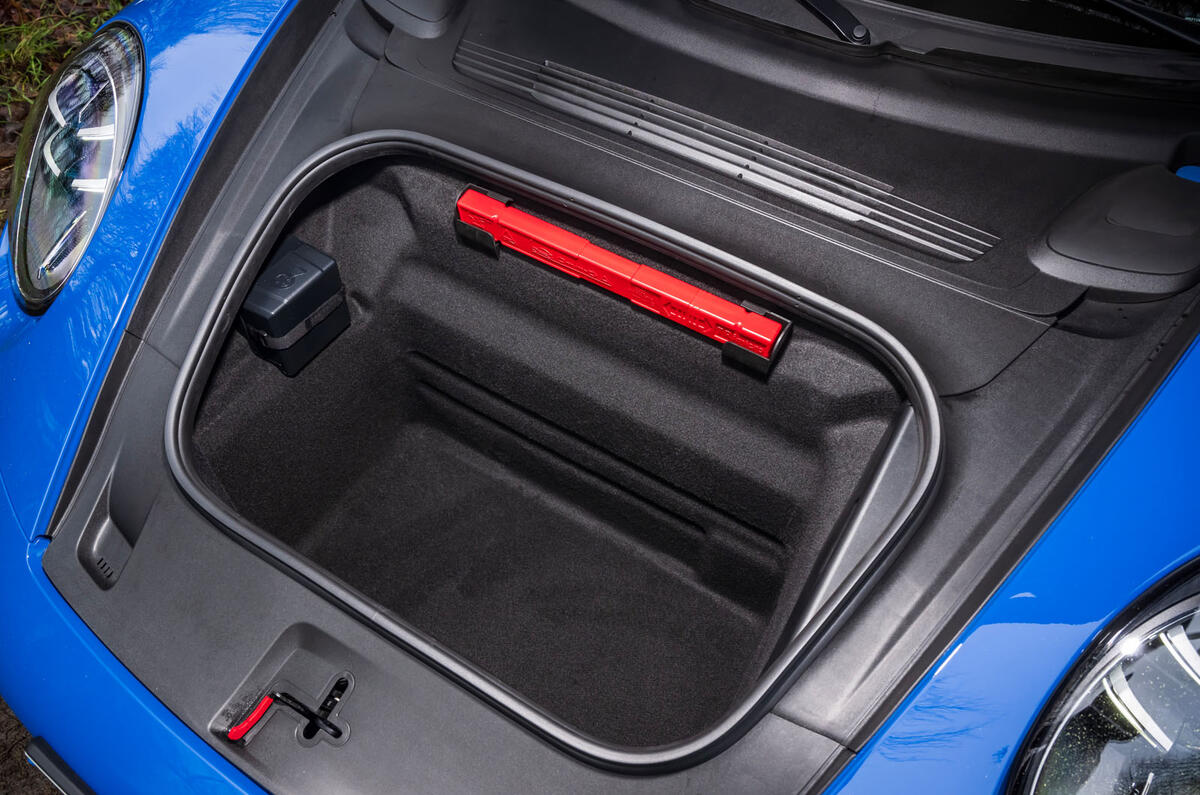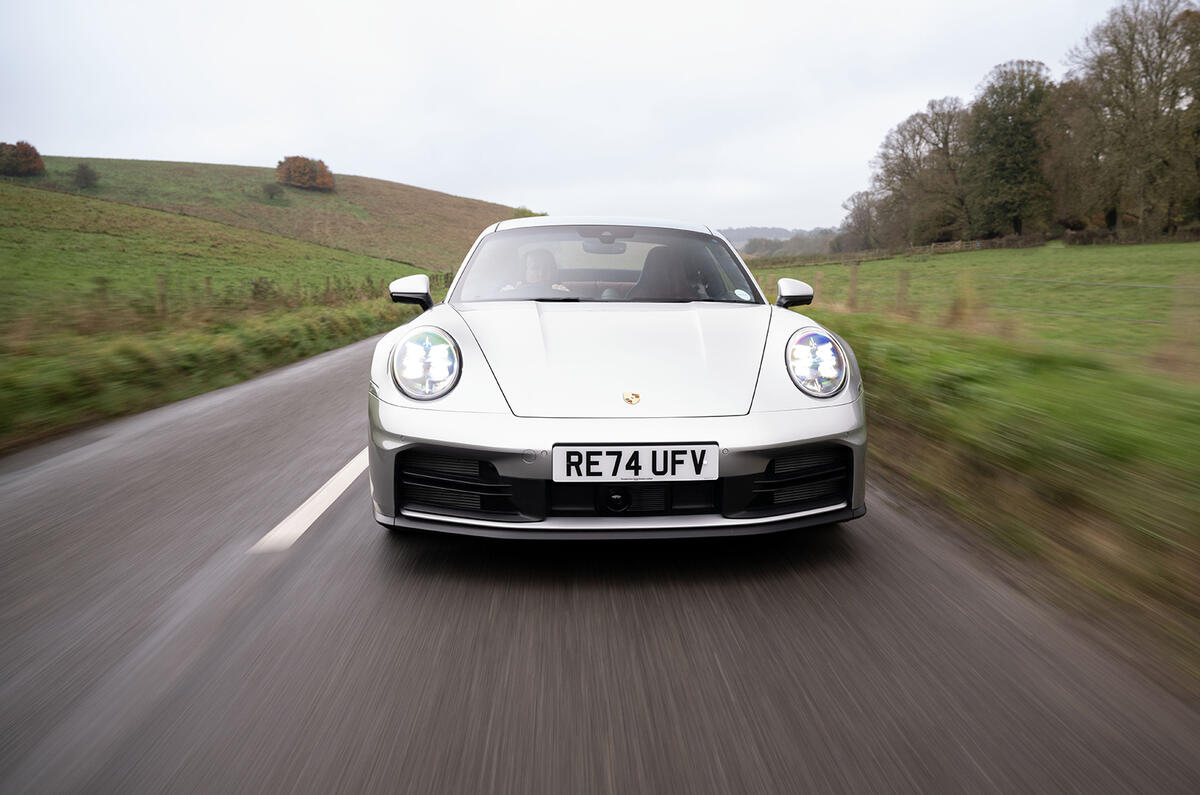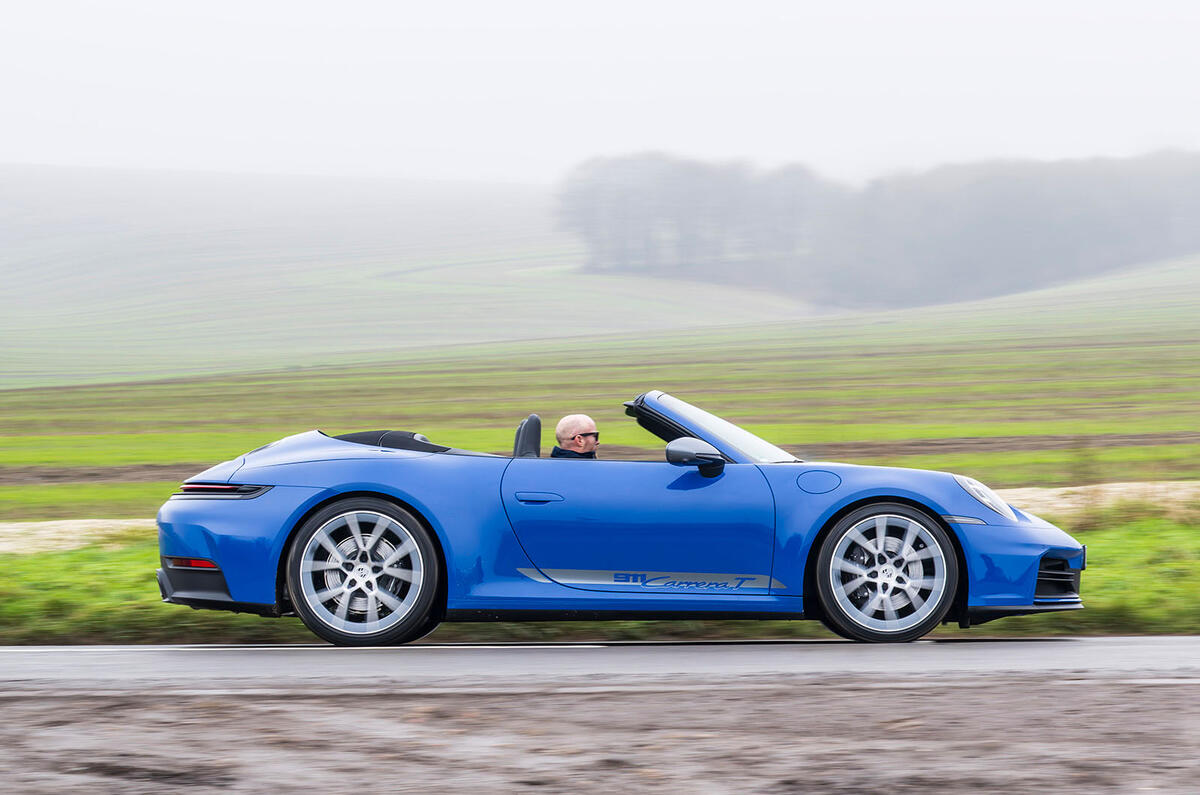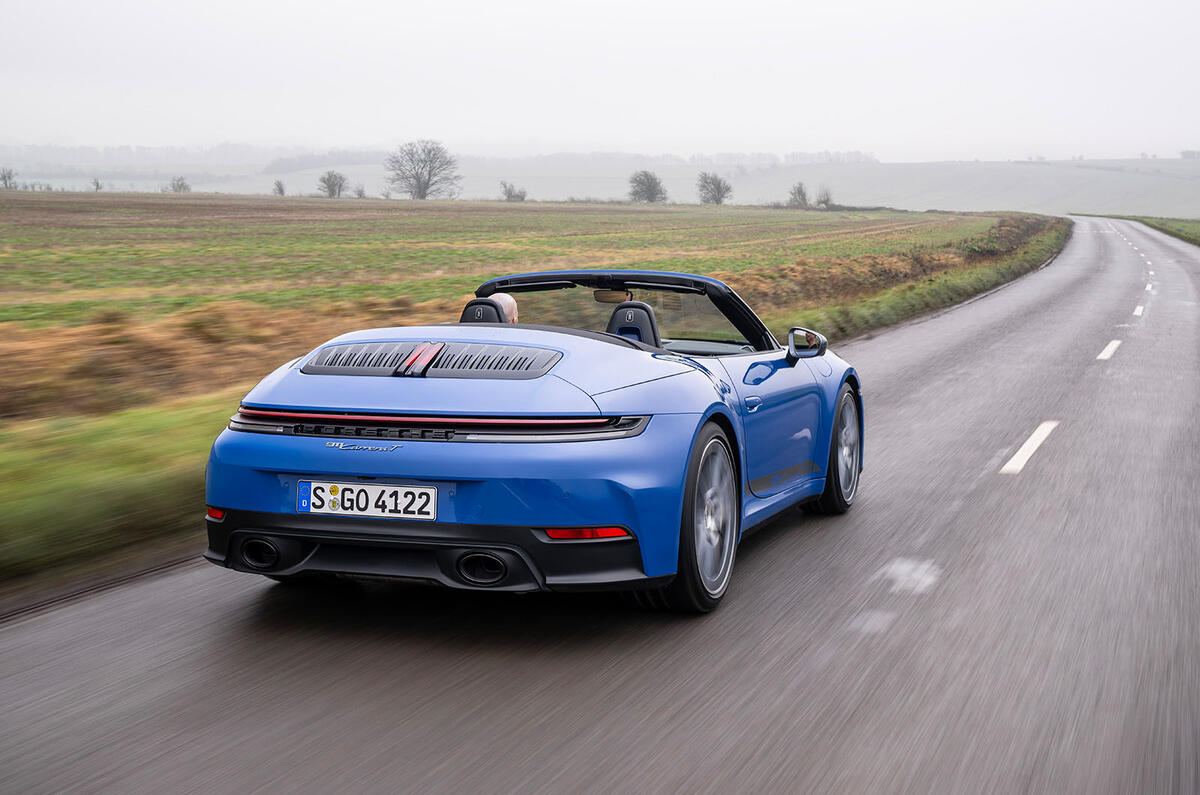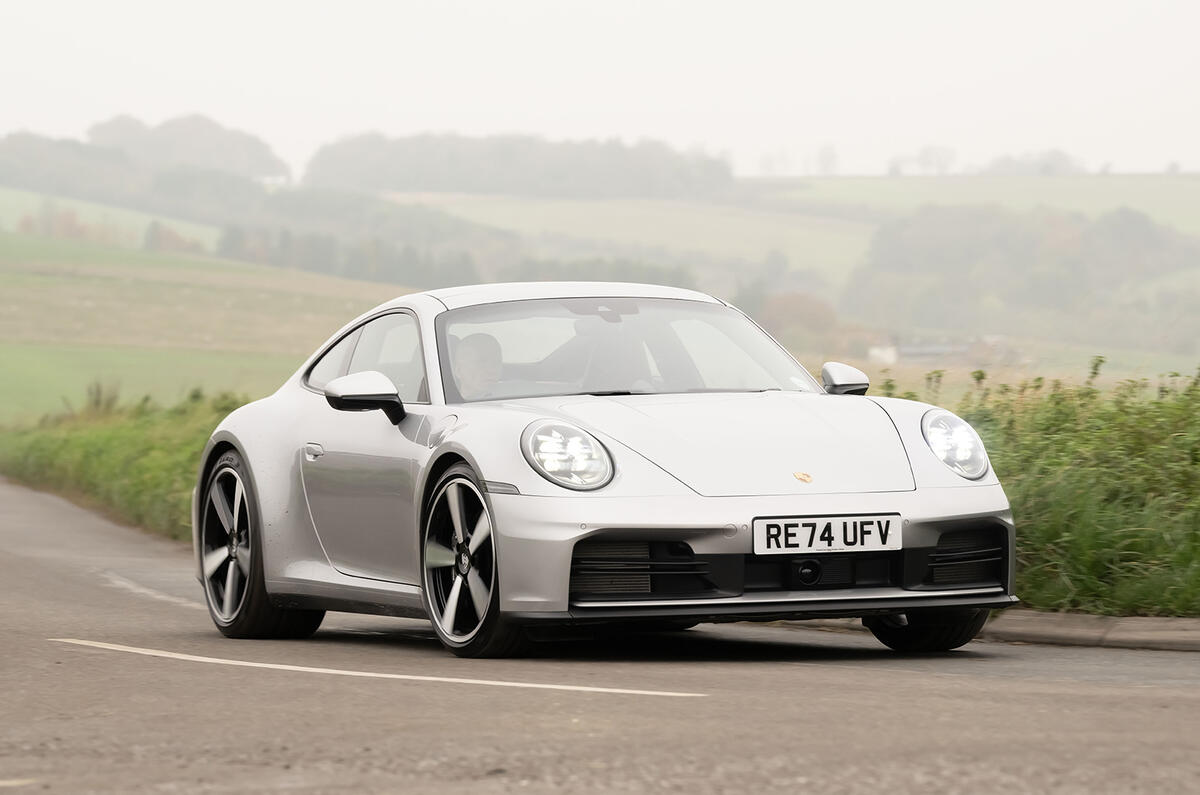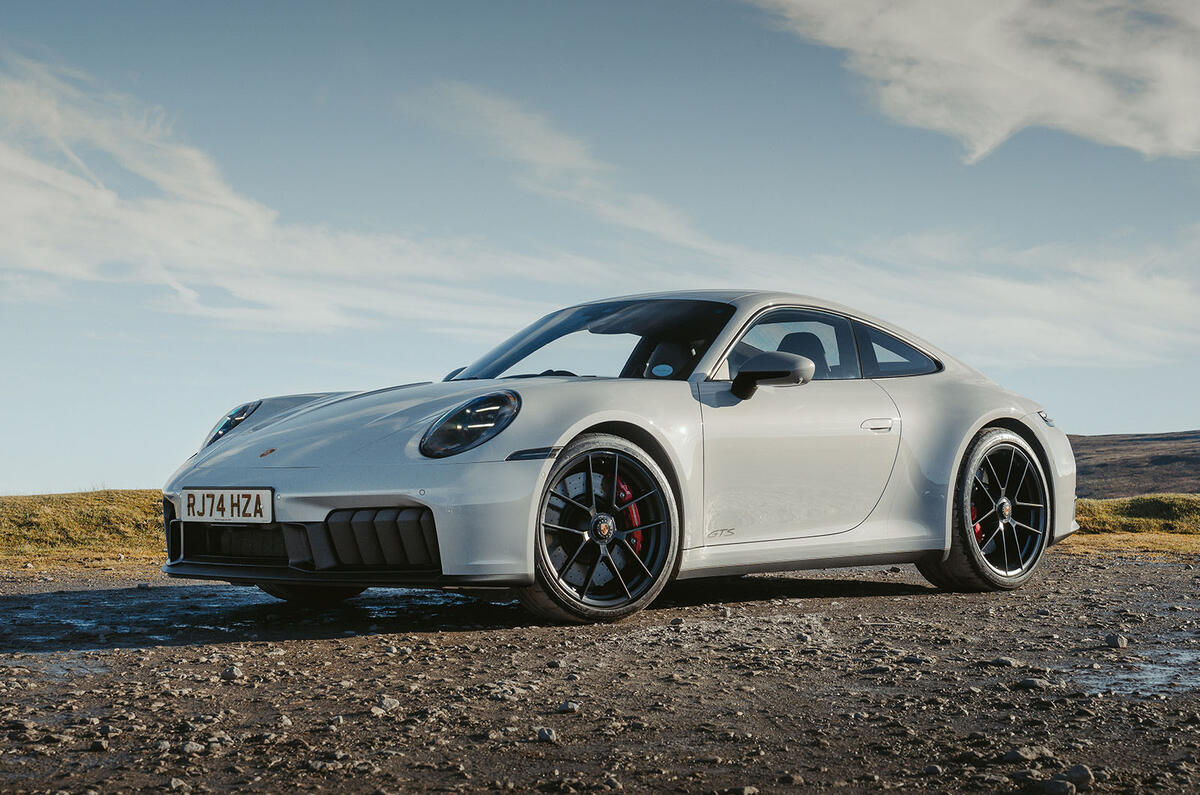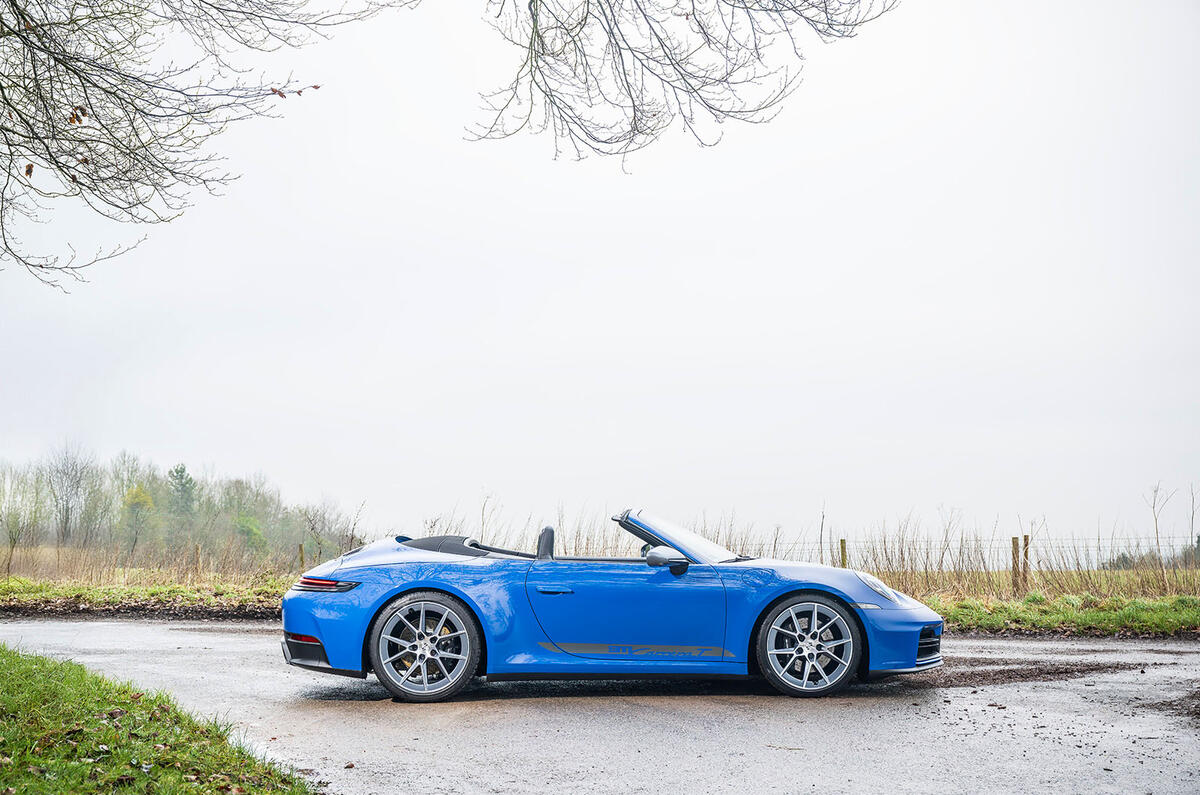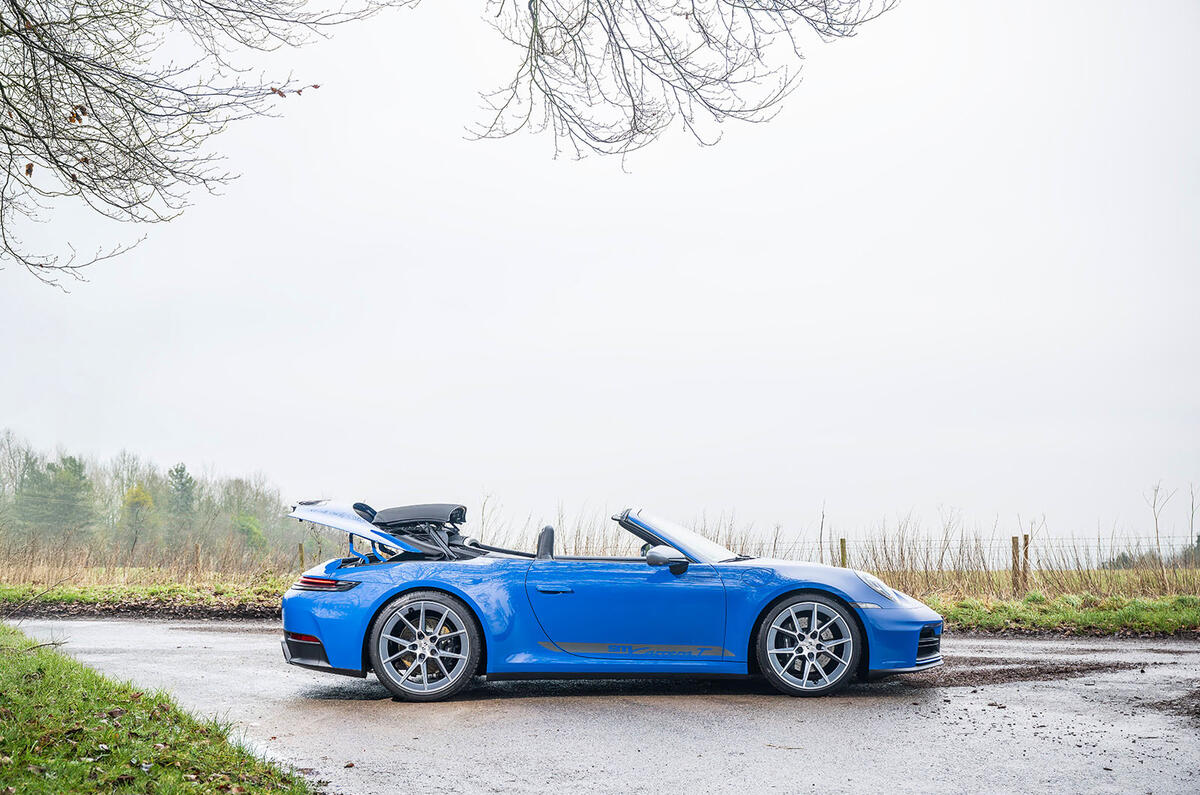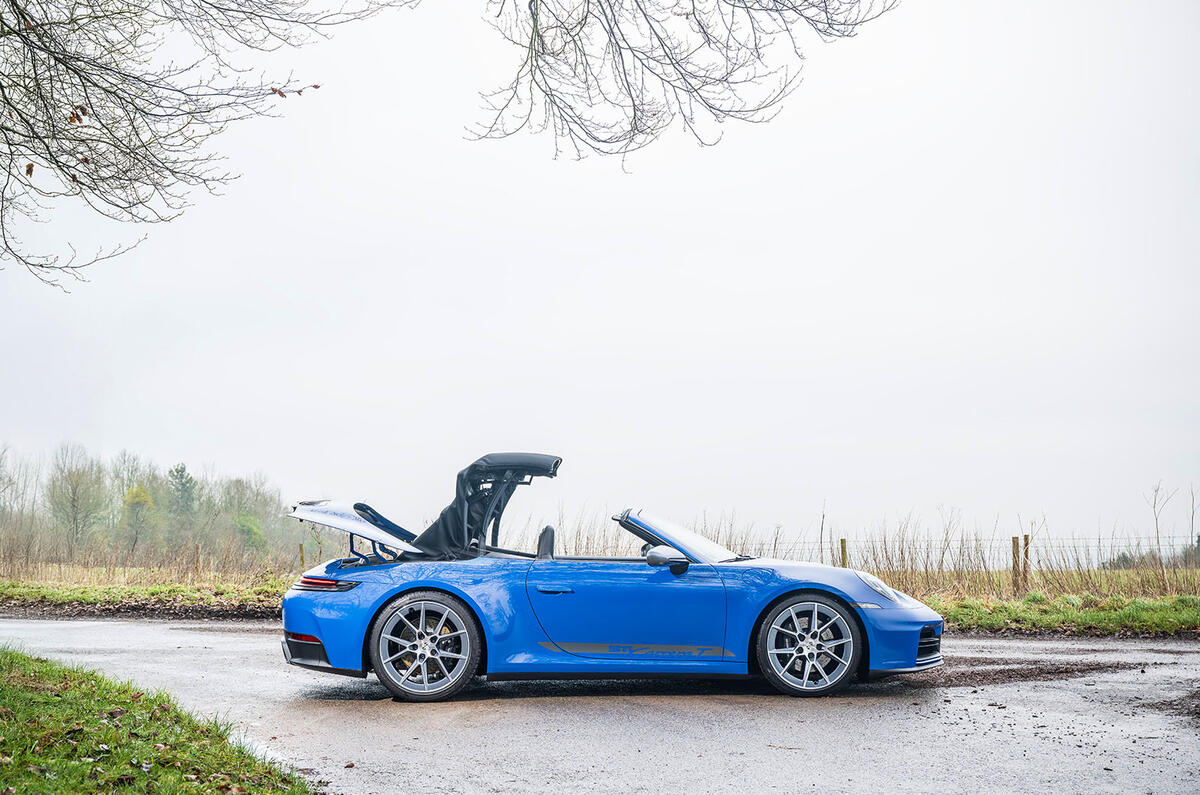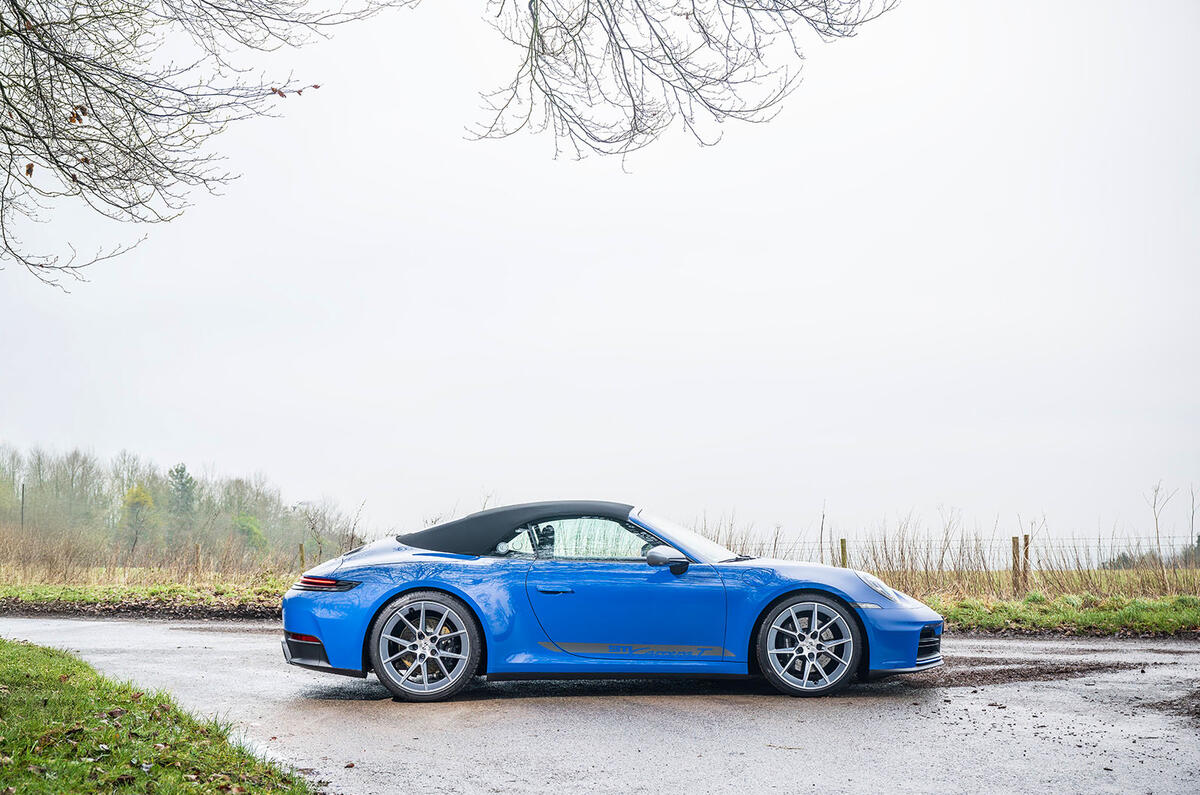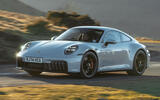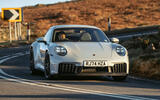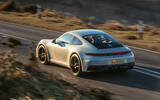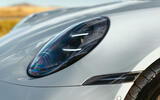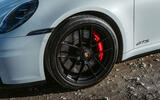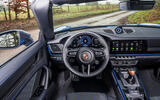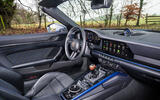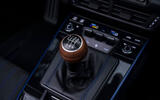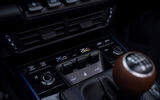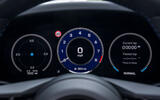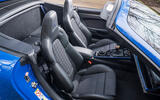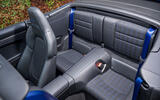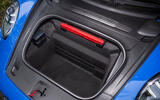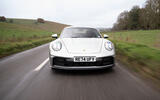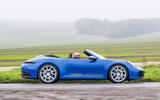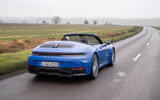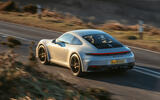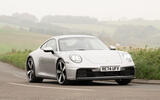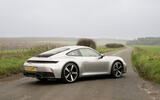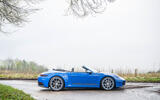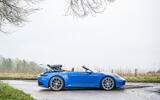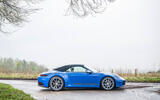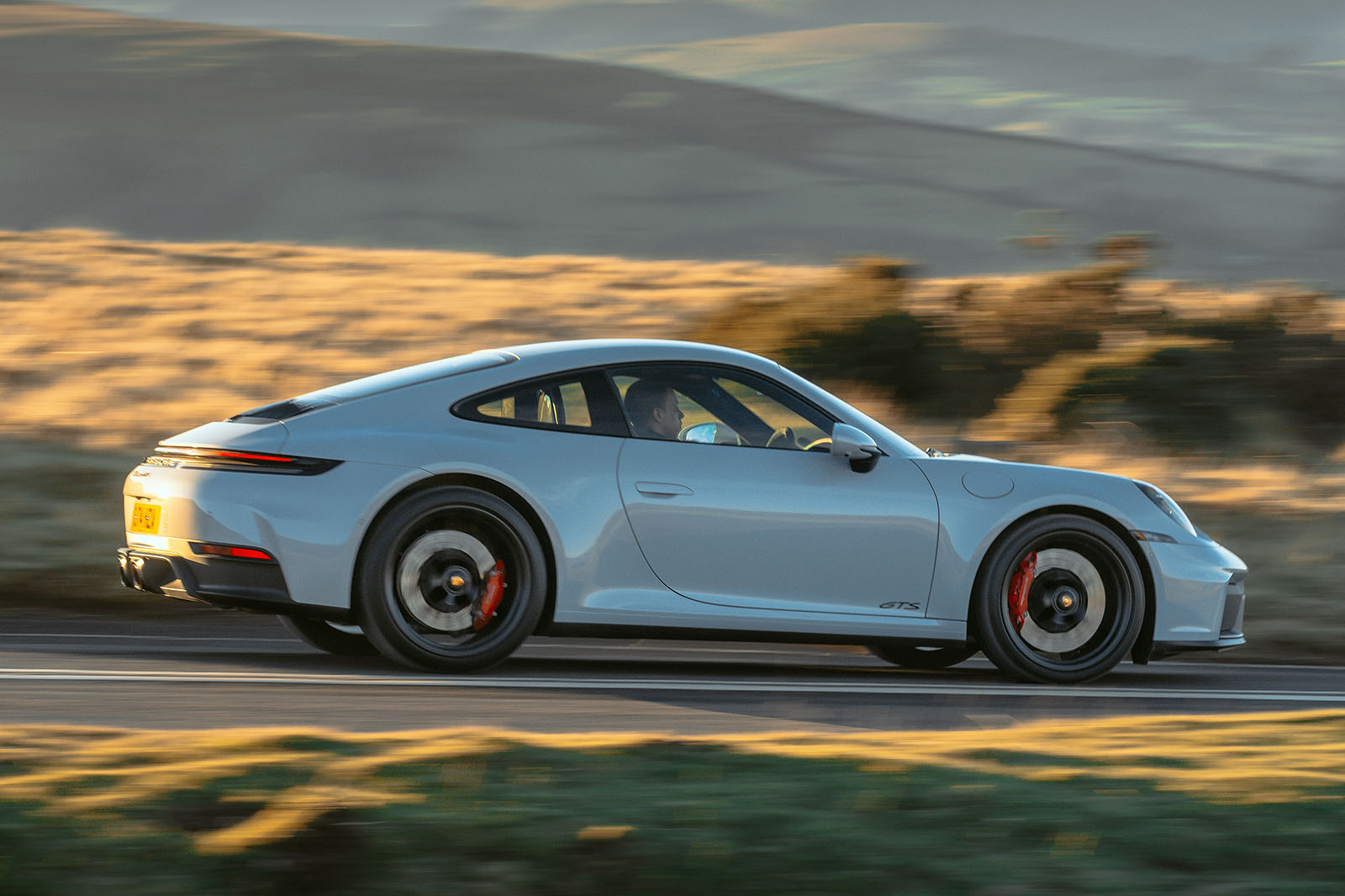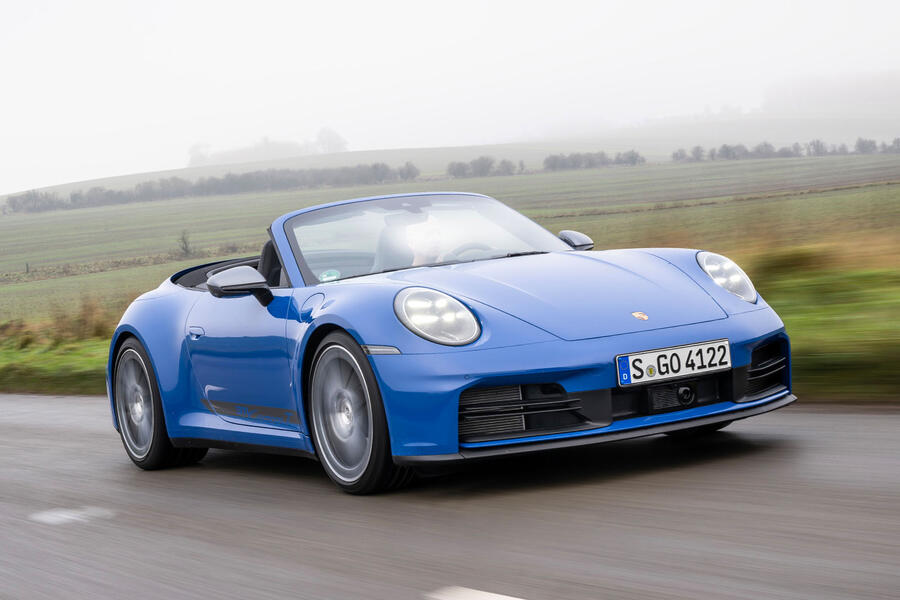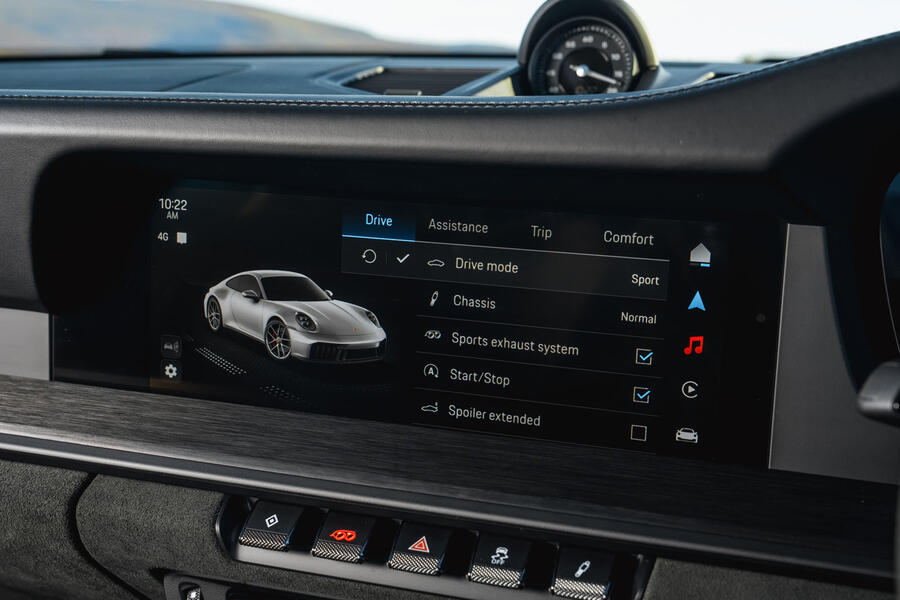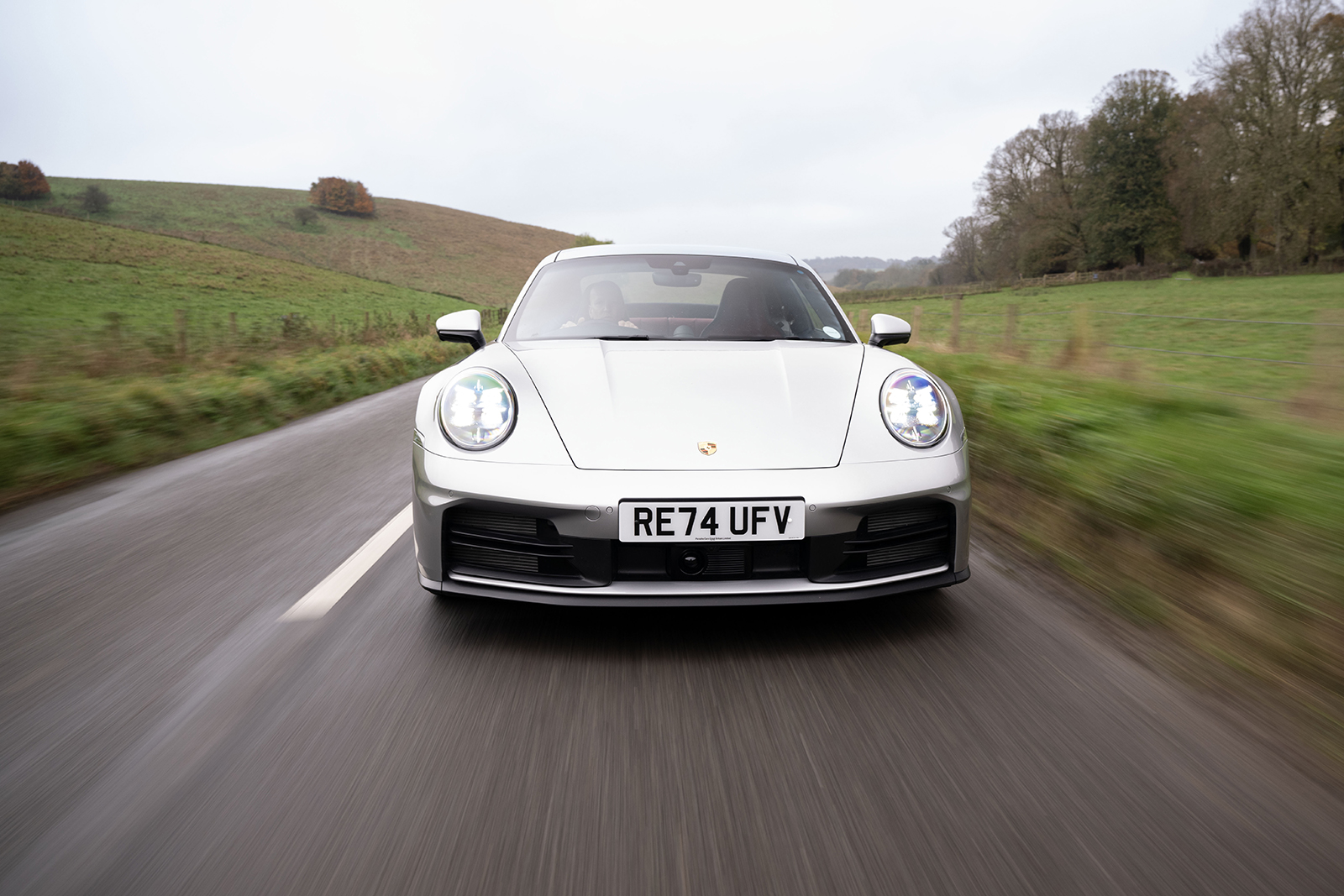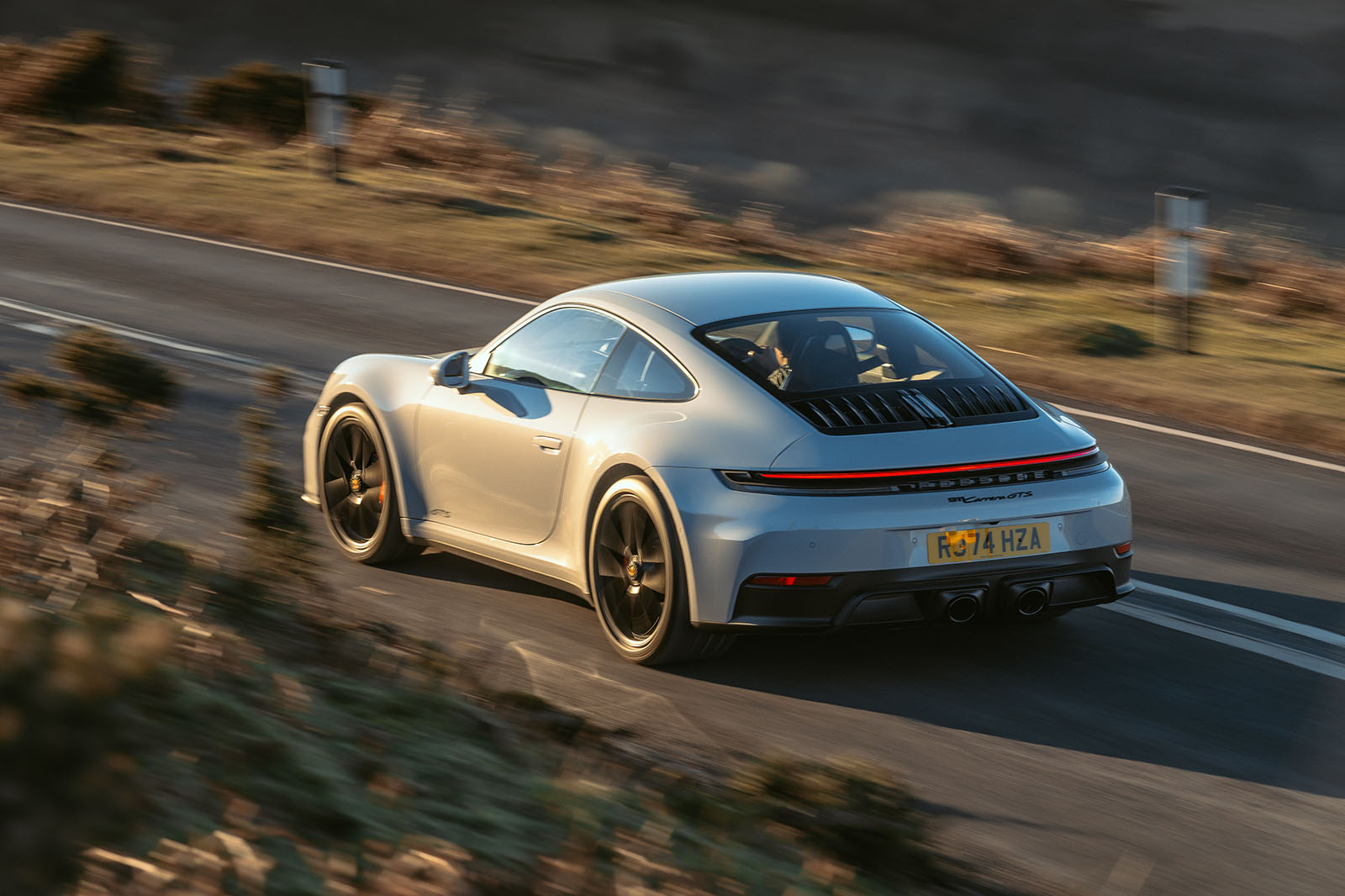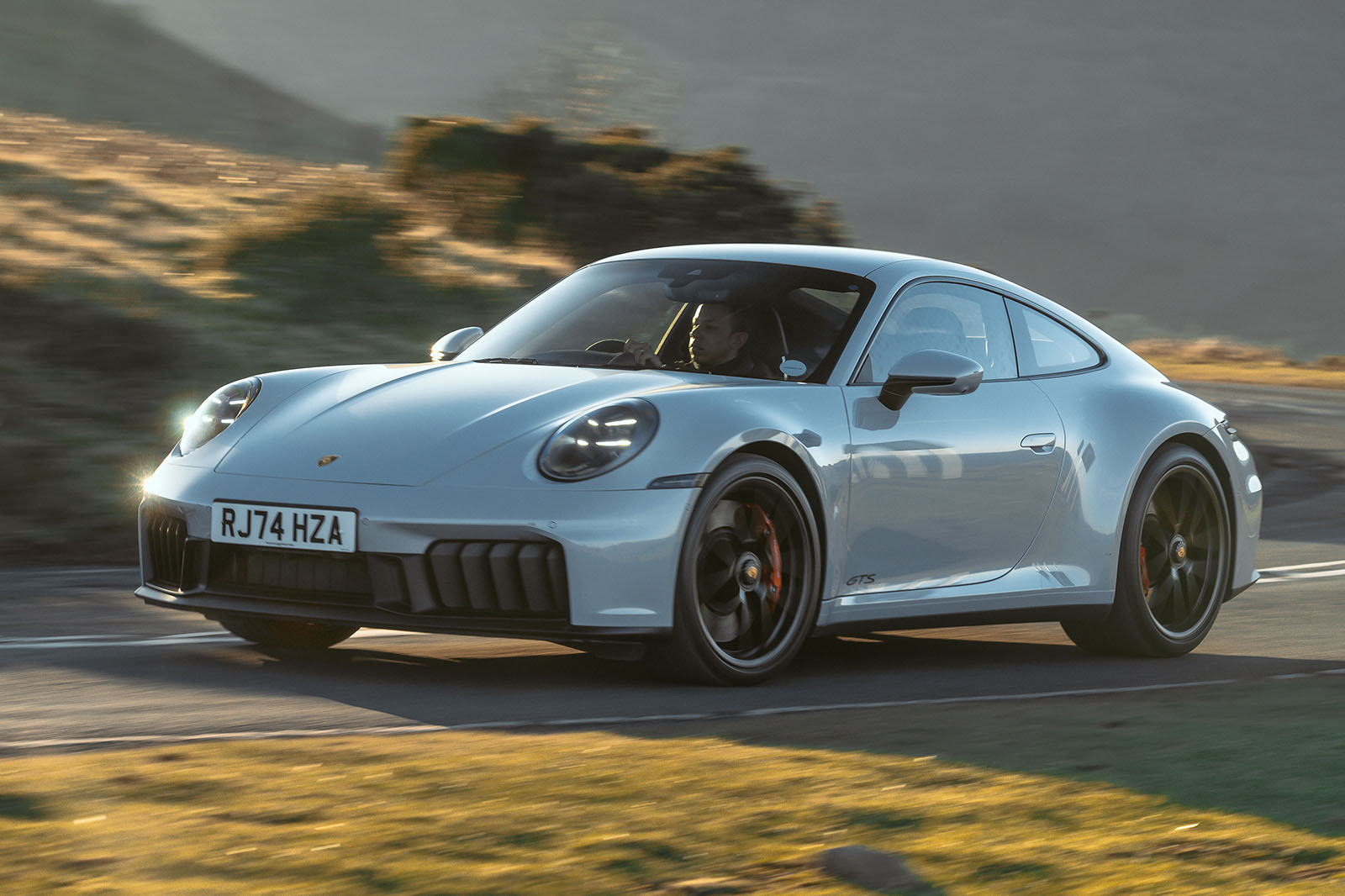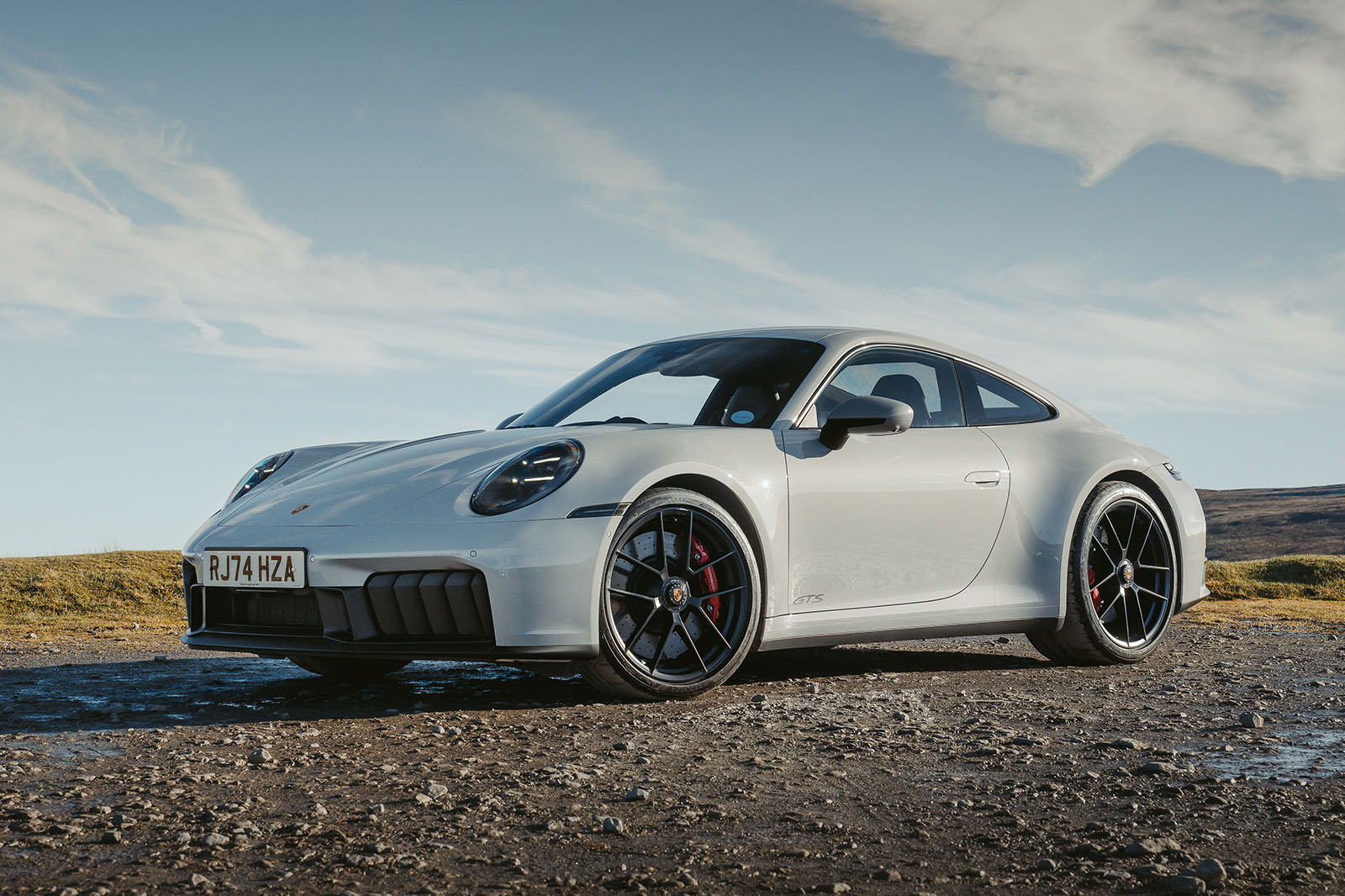Then to the next car, and very suddenly it becomes clear. A flat-out gallop in the Carrera is more of a jaunty canter in the 4 GTS. Whatever else Porsche has done to the GTS, it has made it astonishingly urgent. The new engine is louder, gruffer and less nuanced than the old 3.0, and its responses are fabulously fast. The drive motor can pitch in at any engine revs and the e-turbo motor can maintain turbo revs, so there’s no discernible lag. It rips around the rev band.
Under braking and cornering, you can feel the extra bulk over the Carrera but also that it’s better tied down. You might think it's effectively the same as the Carrera, but in reality it's quite different in character – more so than before, perhaps obviously. It’s bolder, brasher and less analogue and takes about 80% of the effort to go at the same speed on a circuit.
The rear-driven GTS shares the 4 GTS’s urgency but replaces some of its corner-exit stability with a tad extra adjustability and agility. For us, this is where the GTS is at its best, with all of the response of this new engine but as little extra bulk as possible and easier, uncorrupted, feelsome steering.
Since those early drives, we’ve also tested the standard Carrera, a Carrera T Cabriolet, and the GTS on UK roads.
Driving the Carrera in isolation, it’s hard to see what more you could need. Like every 911, it rides firmly and transmits quite a bit of road noise, but pick up the pace and it seems to relax. In the softer suspension mode, it has a hint of the fabled 911 ‘nose bob’ as it breathes with the road rather than trying to emulate a skateboard.
Despite the 911 having grown over the years, it’s still a manageable size, even on narrower B-roads, and the steering lets you place it precisely and reassures you that the grip is there.
In the dry, it basically always is. You don’t bully or provoke a modern 911, because there’s little point. It’s at its best being smoothly flowed along while you enjoy the superb steering and poise and the lovely engine.
The brakes are strong and easy to modulate too.
You would have to drive the Carrera T back-to-back with a standard Carrera to really feel the difference. The T is a little stiffer, but not excessively so, and the four-wheel steering stays largely in the background. The lighter weight would be extremely hard to detect, and given the 911 is noisy at a cruise anyway, we would have preferred more sound deadening rather than less.
Unlike previous Carrera Ts, the '992.2' T is also available as a Cabriolet, whose 90kg weight penalty more than nullifies any weight saving. With that said, the 911 is very good as a drop-top, gaining very few convertible-typical shakes and shimmies.
We will bring you a full road test of the Carrera GTS soon, but for now we can say that it works surprisingly well on the UK's bumpy roads. It immediately feels firmer than a normal Carrera, but the quality of the damping is such that it takes challenging roads in its stride. Meanwhile, the steering feels meatier and more connected than on the standard car.




